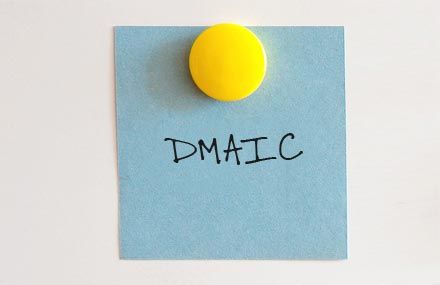
DMAIC stands for the core process of the Six. Sigma approaches in quality management and describes its phases Define-Measure-Analyse-Improve-Control. The DMAIC process is used to make existing processes measurable and to improve them sustainably in terms of to a high customer satisfaction at the lowest possible costs. DMAIC combines known approaches and methods into one systematic approach. For this purpose, the tools are linked across phases, therefore structuring and systemising the project chronologically.

Define – What is the problem?
In this phase, the actual state is documented and it is defined, who the customers of the process are and what needs the process is meant to fulfil. Based on this, the performance characteristics of the process that are critical for meeting the customer expectations, are defined. Additionally, project parameters such as scope, boundaries and timeframes are set.
Measure - How can the impact be measured?
In the phase of measuring, it is determined how well the process really fulfils the customer requirements. Keeping this in mind, the process is initially divided into sub-processes and visualised (Process Mapping). Based on this, possible influencing variables can be determined and methods and instruments for the collection of data from the individual process steps can be set. To ensure the measurement capability the so-called Measurement System Analysis (MAS) is used. As a result of this phase, an understanding of the situation to be improved based on real facts is obtained.
Analyse – What are the cases of the problem?
The aim of the analytical phase is to identify the causes of the deviation from defined performance goals. For this purpose, process- and data analyses are carried out. Instruments used are, besides brainstorming, Ishikawa-Diagrams, FMEA as well as statistical methods.
Improve - How can the problem be eliminated?
During this phase, solutions fare sought for the problems identified in the phase of the analysis. Creative techniques, such as Brainstorming, Brainwriting, Mindmapping or Morphological Boxes can be used during this phase. The possible solutions will be examined and evaluated against standards (legal requirements, regulations, environmental guidelines etc.) and feasibility criteria. The most advantageous solution will be implemented.
Control - How is the improvement permanently embedded in practice?
The last phase is used to anchor the achieved improvements and new procedures by standardisation and documentation. The effectiveness of the measures will be continuously monitored with the developed measuring systems in order to initiate appropriate corrective measures when deviating from set goals.
>
Copyright © 2022
Lean Management Consulting
